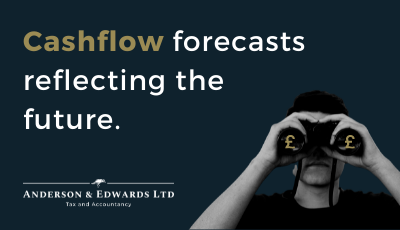
Your accounts don’t have to be hard to understand. Understanding the numbers can empower you to make better decisions, period. Here is part 2 of our series: ‘Maximising your accounting information’. This week, we talk about cashflow forecasting efficiently and effectively.
As a business owner, you should always be looking three months in advance to predict cashflow issues. In order to spot these, ask key questions such as, ‘is there a risk that you could be running out of money?’ or, ‘is your cash balance at risk of dropping below your bank loan limit?’ By forecasting three months in advance, you can predict what you believe will happen in the business AND mitigate any potential risks that could impact your cash position.
Apps such as Float can allow you to input what you expect your income and expenditure to be for the next three years and then focus on the upcoming three months to get there. In addition, Float can be connected to Xero, which allows your accountant to use your financial information to forecast for the period accurately.
To start with, consider your fixed costs and known costs. This could be rent and rates, wages, VAT due, IT costs and PAYE payments etc. In addition, you will want to include any ad hoc expenditure you are planning, i.e. new plant and machinery, recruitment fees or development of a new website.
Your variable costs will be harder to forecast, but there are ways to calculate these. For example, if your sales and direct costs are linked, i.e. for a cafe, then we can use your gross margin to forecast these costs. In other words, if the summer of last year was busy and you ordered more stock and hired more staff, there is a high chance you could estimate the same this year. You could also calculate costs if your business is seasonal, or look at what happened over the past three months
If you cannot make a reliable forecast of your sales, you could estimate it on a cost basis. This is where you calculate your total costs and forecast when you will run out of cash. It will allow you to assess when sales need to be made and when your debtors should pay you.
Once you have added your business’ cashflow forecast, you should now see what your expected cash movements will be in the next three months. If your forecast looks favourable, then great - if not, there are things you can do to try to address the issue.
The first option is to not spend cash on ad hoc projects such as purchasing new equipment. Can you hold off until the next quarter or look at alternative financing methods for equipment? I.e. hire purchase or a secured bank loan? Cash is still king. If you can hold onto it until your cashflow is looking more positive, consider other options of payment first, or not buying it until later.
Another option is to arrange a bank overdraft. These can be highly effective if your cashflow is negative for a short period. Having the breathing space even for a few months could help give your business some flexibility. It may even buy you more time to generate new leads and increase your top line.
The other option is to sell more or reduce costs. Are you in a position of being able to increase your sales without spending more? For example, if you were to increase your selling price by 10%, would you lose 10% or more of your customer base? If not, then you have scope to raise your prices, and therefore improve your cashflow. You could also reduce your costs in two ways: 1) switching to a cheaper supplier or 2) cutting down on excess expenditures.
Once you have input your forecast numbers into Float, you will be able to actively monitor cash levels in real-time, as long as your Xero information is up to date (Float integrates with Xero). By doing this, you’ll be able to see where you have underspent or overspent in a very visual way.
Every business is different, and what each business owner wants will vary. But you don’t need to do this alone. By working with an accountant, you can think about how to improve your cash flow and what apps might help you keep track of this.
We are huge advocates for using technology to help clients with their cashflow. But it’s all about factoring in your business needs and making it work for you. Let us know if you need a hand, we help business owners like you every day. Email us at info@ae-ca.co.uk or phone us on 0131 364 4191.
© 2025 Anderson & Edwards Ltd|Registered in Scotland SC678768|Privacy Policy|Website by Broxden